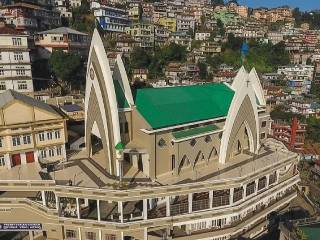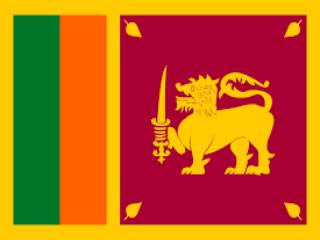New Delhi: A time when nearly all political parties are vying with each other to please Dalits or other backward classes advocating reservations for them, ignoring the Brahmins, French Journalist Francois Gautier, having spent nearly two decades in India, finds it a prejudiced trend based on misconceptions.
In a write up "Are Brahmins the Dalits of today?" (May 26, 2006 ) posted on Rediffmail.com, Gautier has pointed out how much ill-found are the facts about the ‘prosperity’ of Hindus, especially, the Brahmins in today’s India. He lashes out at the UPA Government for following an appeasement policy, which appears to be based on obsolete data about the actual state of Dalits in India.
"At a time when the Congress Government wants to raise the quota for Other Backward Classes to 49.5 per cent in private and public sectors, nobody talks about the plight of the upper castes," says Gautier in his write up. According to Gautier, today’s Brahmins can be easily found cleaning public toilets, a menial job that the government projects as if it is being done only by Dalits since ages. "There are 50 Sulabh Shauchalayas (public toilets) in Delhi; all of them are cleaned and looked after by Brahmins (this very welcome public institution was started by a Brahmin).
There are five to six Brahmins manning each Shauchalaya. In most villages in UP and Bihar, Dalits have a union which helps them secure jobs in villages," Gautier states. Fifty per cent of rickshaw-pullers in Delhi’s Patel Nagar are Brahmins. Did you also know that most rickshaw pullers in Banaras are Brahmins?," Gautier asks.
He questions: "Do our institutes connect with the real India?" while pointing out the reverse discrimination existing in bureaucracy and politics of the country. Talking about Kashmiri Pandits, Gautier mentions they are living as refugees in their own country. "400,000 Brahmins of the Kashmir Valley, the once respected Kashmiri Pandits, now live as refugees in their own country, sometimes in refugee camps in Jammu and Delhi, in appalling conditions. Their vote bank is negligible," says Gautier.
In South India, the state of Brahmins as stated by various agencies speaks for itself. eventy five per cent of domestic help and cooks in Andhra Pradesh are Brahmins. "A study of the Brahmin community in a district in Andhra Pradesh (Brahmins of India by J Radhakrishna, published by Chugh Publications) reveals that today all Purohits live below the poverty line," quotes Gautier.
Gautier questions: "Who are the real Dalits of India?"
"In fact, according to this study there has been an overall decline in the number of Brahmin students. With the average income of Brahmins being less than that of non-Brahmins, a high percentage of Brahmin students drop out at the intermediate level," Gautier quotes. "The study also found that 55 per cent of all Brahmins lived below the poverty line — below a per capita income of Rs 650 a month," adding there is no reason to believe that the condition of Brahmins in other parts of the country is different.
Gautier quotes the per capita income of various communities as stated by the Karnataka finance minister in the State assembly: Christians Rs. 1,562, Vokkaligas Rs 914, Muslims Rs. 794, Scheduled castes Rs. 680, Scheduled Tribes Rs. 577 and Brahmins Rs. 537. But preferential policies for the non-Brahmins in government jobs and modern occupations such as law and medicine have forced Brahmins to retreat in these spheres as well.
Gautier suggests that caste shouldn’t overwrite merit while quoting an Andhra Pradesh study, the largest percentage of Brahmins today are employed as domestic servants. The unemployment rate among them is as high as 75 per cent. There are hundreds of families that are surviving on just Rs 500 per month as priests in various temples (Department of Endowments statistics).
Gautier says : "There are innumerable instances in which Brahmin priests who spent a lifetime studying Vedas are being ridiculed and disrespected." "At Tamil Nadu’s Ranganathaswamy Temple, a priest’s monthly salary is Rs 300 (Census Department studies) and a daily allowance of one measure of rice. The government staff at the same temple receive Rs 2,500 plus per month," Gautier states. Gautier observes and lashes out at the Congress-led government observing "the tragedy of modern India is that the combined votes of Dalits/OBC and Muslims are enough for any government to be elected. The Congress quickly cashed in on it after Independence, but probably no other government than Sonia Gandhi’s has gone so far in shamelessly dividing Indian society for garnering votes."
Gautier also quotes from the Indian Express newspaper’s report: ‘These measures will not achieve social justice’ "The Indian government gives Rs 1,000 crores (Rs 10 billion) for salaries of imams in mosques and Rs 2000 crores (Rs 2 billion) as Haj subsidies. But no such help is available to Brahmins and upper castes." Writing about how reservations fracture Hindu society, Gautier observed that Anti-Brahminism originated in, and still prospers in anti-Hindu circles. It is particularly welcome among Marxists, missionaries, Muslims, separatists and Christian-backed Dalit movements of different hues. When they attack Brahmins, their target is unmistakably Hinduism.
Ref: http://in.news.yahoo.com
Related HJS Section
> Learn Hinduism




